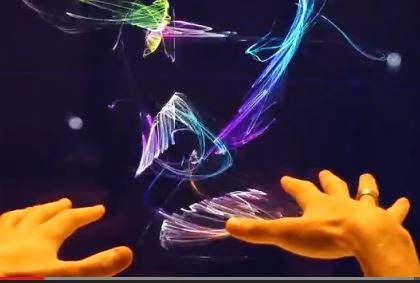I am very excited about using Math Munch in my classroom as an enrichment activity. Today as I listened to the recording of the Global Math Autumn Special, Justin asked, "What are some goals you have for your students?" Well, one huge goal I have for my students is to learn that math is so much more than the work you typically find in a textbook. Math is beautiful and it permeates every area of our lives!
Unfortunately our curriculum is huge, and our school is very particular about sticking to the curriculum calendar. I decided that at least on test days, I would assign something that would open the eyes of my students to the world beyond in math. Math Munch provides the perfect avenue for that exploration.
So this weekend, my students are exploring one of the latest posts on Math Munch, "Digital Art, Mastermind, and Pythagoras. And I am thoroughly enjoying their comments in Edmodo. Here are just a few snippets ...
AL writes "The video showing the orchestra and Nathan Selikoff was quite interesting. It reminded me a lot of my childhood with Disney Fantasia, where music is represented through a certain story. As I watched the video, I was surprised by how the Digital Art represents the music in different ways. When the Brass and Upper Strings were echoing each other, the screen would show blue swirls for the Brass and green and yellow for strings. You could also see that vibration of the notes were shown through dots moving fast and slow depending on the vibration of the sound made. I learned that it is possible to represent music in visual art."
HC writes "I chose to follow the link to the strategies for the online game Mastermind. I had absolutely no idea that there were so many strategies and solutions to the game. I tried to use the strategies to win the game, but the best I could do was solve the board in six tries. The strategies reminded me of the movie War Games, in which two kids accidentally lead the US to def-con 1 because they hacked onto a computer game. Computer codes can be used for all sorts of things, and I think that most people take them for granted. Without computer codes, we wouldn't have most of what we do have today such as cellphones, YouTube, Netflix, Facebook, Twitter, Google, etc. It is important to understand how these codes work, and know the basic skills needed to make them. It would be great if there was ever a class that taught you how to make computer codes, or equations much like the ones seen in the video, "Beautiful Chaos"."
EM writes "In the artwork "Beautiful Chaos", I was surprised to find out that the masterpiece was created with the graphs of different equations and functions. The artist didn't just scribble a pattern on the computer until it looked pretty, he created the craft geometrically and algebraically. What I wonder is what equations and functions did he use, what parent functions did he rely on the most, and where the x and y axis were placed."
ZJ writes " The link I decided to follow was the God's number link, simply because I didn't really understand what a God's number was. I discovered there were 43,252,003,274,489,856,000 different configurations of a Rubik's Cube! Surprisingly though, mathematicians found it could be solved in at most 20 moves, making 20 the Rubik's Cube's God's Number! Now I understand the concept of a God's number (knowing them would be really helpful when playing a specific game, huh?)."
PS writes " I was curious about how Selikoff was able to control the equations. Did he change the variables by the way he moved his hands, or did each quadrant he moved into have a pre-determined equation? I also wondered if the images would have been different if he had only used one hand instead of two."
HC writes, "I think it would be cool, if he created a 'Behind the Scenes' look at how he did it. Did anybody watch Vi Hart's video? I learned a lot of interesting information just by watching an 8- minute video. She has amazing math skills as well as doodling skills. I wonder what education she got, and how she got interested in Pythagoras."
CR writes "My question for Nathan Selikoff is about how he funds his projects. How does a mathematical artist make money? He must get funding somehow in order to create things like his cardboard marionette and his "Beautiful Chaos" piece."
DB writes " In the post, I encountered that math can become something beautiful and not just stressful and boring which surprised me. While watching Beautiful Chaos, I learned that it was so simple to do which surprised me. It also surprised me that Nathan Seilkoff can incorporate math and art together and as a product, create something so interesting."
Now ... if I can just find a way to extend these conversations so that students realize that they too can create beautiful math!
Thank you, Math Munch Team!

No comments:
Post a Comment